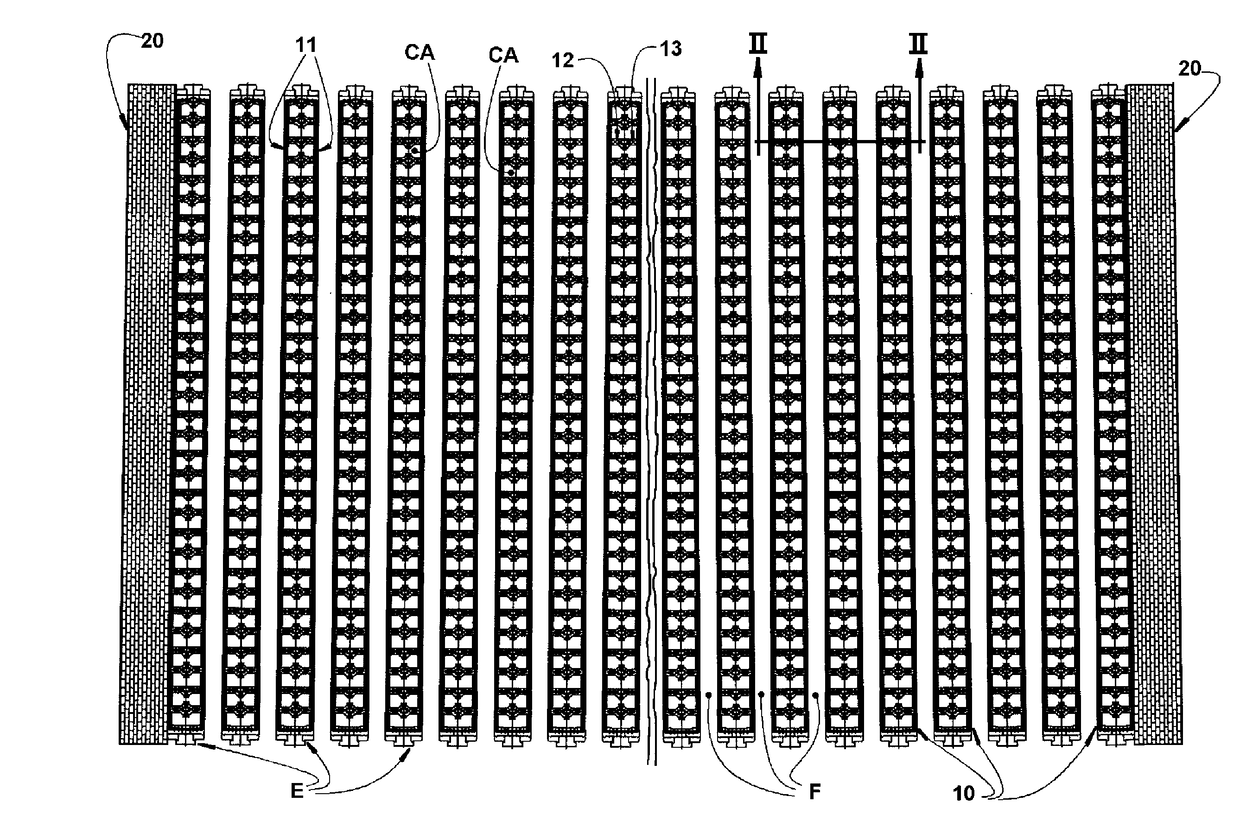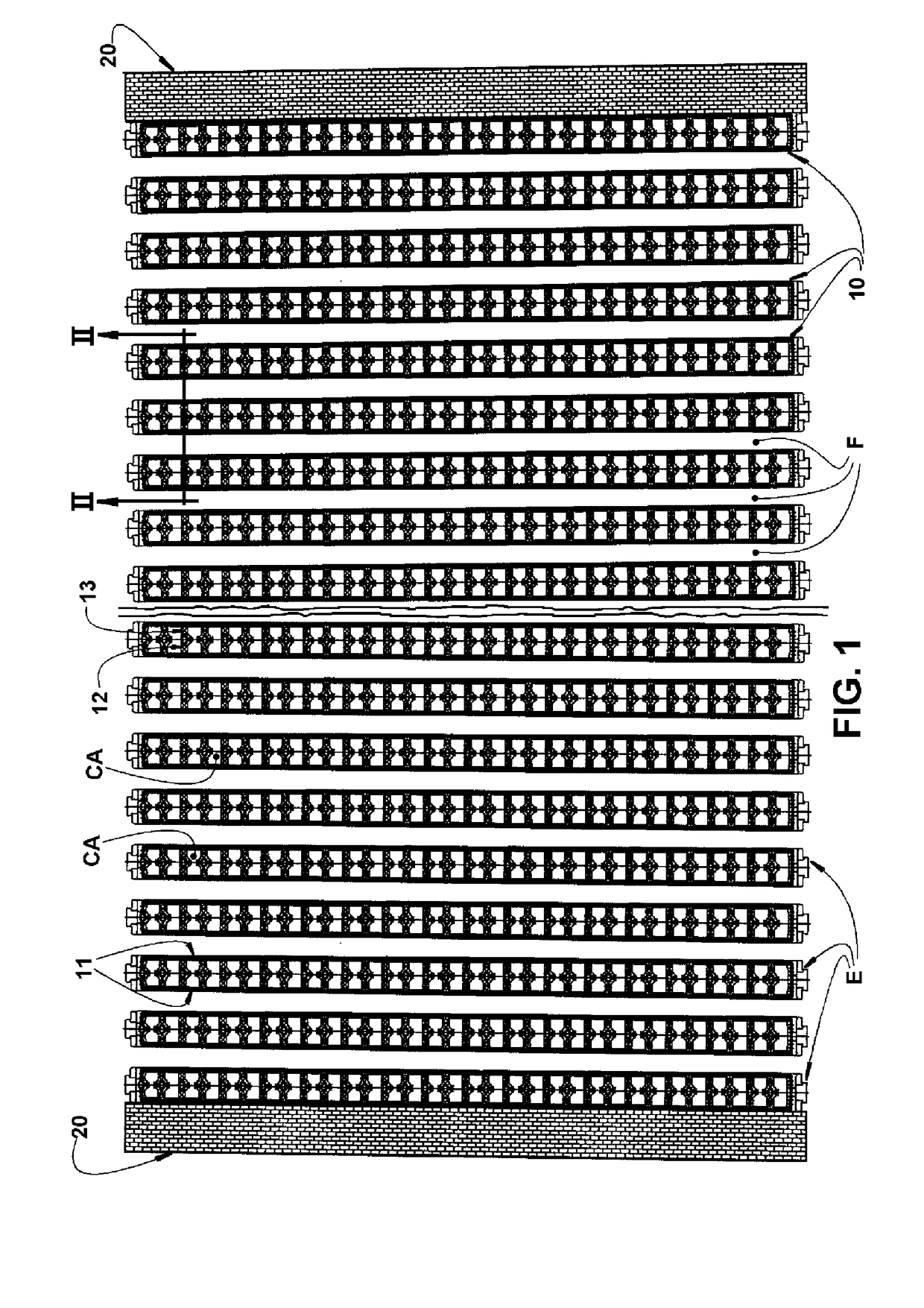Method for coke oven repair
a coke oven and coke oven technology, applied in the field of coke oven repair, can solve the problems of coke ovens, progressive wear of their opposing sidewalls, and wear more pronounced in the anterior and posterior end regions
- Summary
- Abstract
- Description
- Claims
- Application Information
AI Technical Summary
Benefits of technology
Problems solved by technology
Method used
Image
Examples
Embodiment Construction
[0035]As described above and illustrated in the drawing figures, the method is applied to ovens F for the production of coke that are arranged side by side in batteries and each comprising two sidewalls 10, opposite one another, and one of them is common to two adjacent ovens F. The sidewalls 10 are formed by side bricks 11 and transverse bricks 12 and 13, the latter being arranged in vertical columns, spaced apart from each other to define, within each sidewall 10, a plurality of heating chambers CA (or combustion chambers) arranged vertically and providing a hollow construction to each of said lateral sidewalls 10. The side bricks 11 and transverse bricks 12 and 13 are made of refractory material such as silica, fireclay, clinker or insulating material.
[0036]The opposing sidewalls 11 are seated on a generally concrete base (not shown), and are closed at the top by a top wall PT, in refractory bricks. Each oven F is closed at the top by a roof T, also made of refractory material an...
PUM
| Property | Measurement | Unit |
|---|---|---|
| length | aaaaa | aaaaa |
| height | aaaaa | aaaaa |
| width | aaaaa | aaaaa |
Abstract
Description
Claims
Application Information
 Login to View More
Login to View More - R&D
- Intellectual Property
- Life Sciences
- Materials
- Tech Scout
- Unparalleled Data Quality
- Higher Quality Content
- 60% Fewer Hallucinations
Browse by: Latest US Patents, China's latest patents, Technical Efficacy Thesaurus, Application Domain, Technology Topic, Popular Technical Reports.
© 2025 PatSnap. All rights reserved.Legal|Privacy policy|Modern Slavery Act Transparency Statement|Sitemap|About US| Contact US: help@patsnap.com



